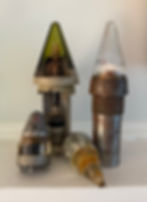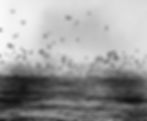Homefront to Battlefront: James Van Allen
- Stephen Gould
- Jun 27
- 3 min read
Updated: Jul 18

Lt. Commander James A. Van Allen, summer resident and husband of Southampton-born, Abigail Halsey, was a leader in the development of the proximity fuze, which dramatically increased the effectiveness of anti-aircraft guns. Van Allen's work on this "fuze" (the military spelling, as opposed to "fuse") was part of one of the war's most important and closely guarded technological developments.
At the beginning of the war, the probability of a direct hit on a fast-moving target, such as an aircraft, was low, with thousands of rounds of ammunition needed to shoot down a single aircraft. With a proximity fuze, an artillery shell only needed to pass close by the target before exploding. The proximity fuze used a small radar transmitter in the shell's nose that would detect when it was close enough to an aircraft to cause damage, then automatically trigger the explosion. This created a deadly cloud of shrapnel that was far more likely to bring down enemy planes. Much of the research on the proximity fuze was completed at The Johns Hopkins University Applied Physics Lab (APL) where Van Allen was a researcher.

After testing the fuze in the United States, Van Allen went to the Pacific in November 1943, hoping to convince naval crews to use the new weapon. He later recalled that he wanted "...to save American lives in the Pacific where the fleet as under murderous attack." The technology was considered so secret that Van Allen could not tell anyone how the the fuze worked and the naval gunners were initially reluctant to use them. A meeting between Van Allen and Admiral Willis A. Lee, Jr. (commander of the Pacific Fleet's battleships) on board the battleship USS Washington (BB-56) helped convince the Navy to use the new device. Van Allen later took a position as Admiral Lee's Assistant Staff Gunnery Officer.

The USS Washington and six other battleships were sent to provide anti-aircraft support for American aircraft carriers during the Battle of the Philippine Sea in June 1944, a decisive victory for the American Navy. US Navy Secretary James Forrestal stated in 1945, "Without the proximity fuze, our westward advance across the Pacific could not have been so swift and the cost in men and ships would have been immeasurably higher." For his actions at the Pacific, Van Allen was awarded four Navy Battle Stars.

After the war Van Allen's career took a different direction. He returned to the APL, where he used captured German rockets for high altitude research. This research later resulted in placing satellites into orbit and Van Allen was a key contributor to what became the "Space Race" with the Soviet Union. He helped build the American space program, including the Pioneer, Mariner, and Voyager missions. In 1953, his research detected radiation belts surrounding Earth, now known as the Van Allen radiation belts.

James Van Allen died in 2006. He and his wife Abigail are buried in Southampton. As the voices of the "Greatest Generation" grow fainter with time, we invite you to help preserve their memory and honor heroes like James Van Allen. If you have a loved one who served or lived through World War II, we welcome you to share their story with us by clicking on this link: https://forms.gle/ZXxMabyJQyGvjc3m.
The contribution made by Van Allen during World War II is on display until the end of June as part of a revolving display featuring Southampton heroes, Homefront to Battlefront: Southampton during WWII. Starting on July 12, new heroes (including Harry Martin, a beloved long-time member of VFW Dunes Post 7009 and flag-bearer in Southampton Village's annual Independence Day Parade) will be recognized in the Southampton History Museum's pop-up exhibition, open Saturdays from 11 AM to 4 PM at Veterans Memorial Hall in Southampton Village.
